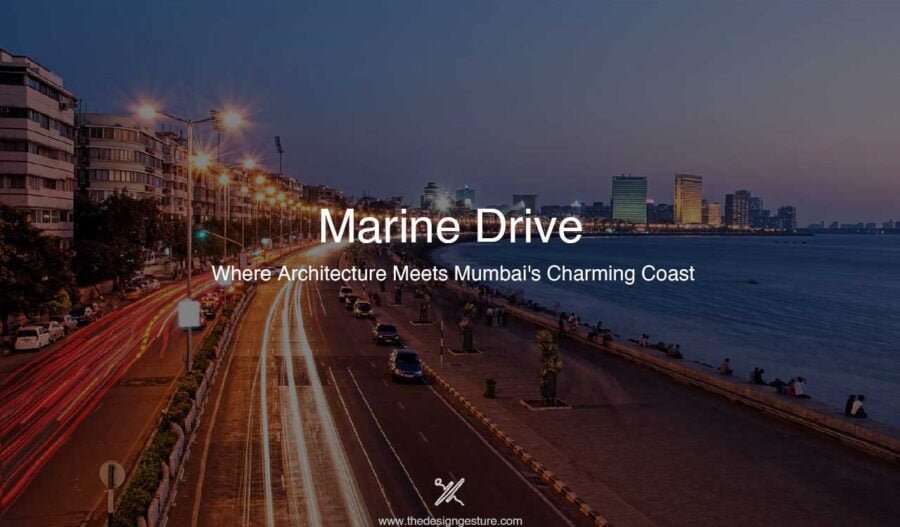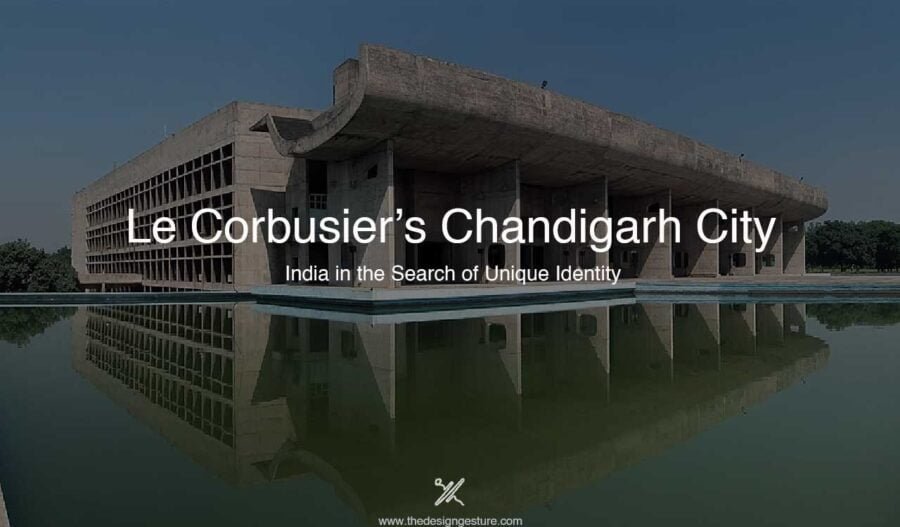Table of Contents
Mumbai-Bombay
Imagine a Bollywood movie set in the colorful streets of Mumbai, where the actors eat vada pav, the city’s favorite street food, while navigating past famous architectural sites like the Gateway of India and the Chhatrapati Shivaji Terminus. The protagonists get a kick out of every mouthful of hot vada pav, and this enthusiasm helps them go through song-and-dance performances set against the colorful architecture of Mumbai.
Mumbai’s architectural environment reflects its multicultural nature, from the sweeping lines of modern skyscrapers to the imposing grandeur of structures from the colonial past. As a melting pot of traditions and lifestyles, Mumbai has absorbed diverse architectural styles, each adding layers to its urban fabric. From the majestic Gothic Revival of Victoria Terminus to the elegant Art Deco facades along Marine Drive, Mumbai showcases a spectrum of architectural wonders that stand as enduring symbols of its past.
Colonial Heritage
Mumbai’s architectural heritage bears witness to its colonial past, with buildings dating back to the British Raj. The Bombay High Court epitomizes the colonial impact on Mumbai’s legal system with its unique Indo-Gothic exterior and soaring central dome. These structures from the colonial era represent the lasting heritage of Mumbai’s colonial history and demonstrate the architectural brilliance of their era. Their historical significance and ageless elegance never fail to enthrall tourists.
The Rajabai clock tower was designed by renowned watchmaker Lund & Blockley. 24 sculptures in the tower portray the everyday lives of Indians living under the British colonial era. The clock tower and arched doorway are two features that draw tourists to the institution from all across Mumbai. Meanwhile, the Bombay High Court is renowned for its Indo-Gothic facade, blending European Gothic revival elements with indigenous architectural motifs. The central dome symbolizes the intersection of colonial governance and Indian tradition.
Vernacular Architecture
Known for their distinctive fusion of regional materials, building methods, and cultural influences, vernacular architecture can be found in neighborhoods such as Khotachiwadi, Bandra, and Fort. In the center of South Mumbai, Khotachiwadi is well known for its charming Portuguese-style houses with elaborate woodwork and vivid colors. Similarly, Bandra’s narrow lanes are dotted with traditional chawls, and multi-story tenements built during the early 20th century to accommodate the city’s burgeoning population. These communal residences feature shared courtyards and common amenities, fostering a sense of community among residents.
Since Khot, a Goan immigrant, founded the town in the 19th century, the architecture of Khotachiwadi has combined Portuguese and indigenous elements. Urban construction has threatened Khotachiwadi’s distinctive architectural identity, yet the area has managed to draw tourists eager to get a close-up look at Mumbai’s rich cultural legacy. Mumbai’s history precincts have a wide variety of architectural forms, from classic chawls (tenements) to quaint vintage dwellings. Precincts including Khotachiwadi, Bandra, and Fort provide a window into the past while showcasing the city’s rich architectural legacy.
Urban Redevelopment
Mumbai’s urbanization and expanding population have fueled several urban rehabilitation initiatives, which have been essential to improving infrastructure and reviving older areas. The Bandra Worli Sea Link, a cutting-edge technical feat that links Bandra and Worli and dramatically cuts travel times and relieves traffic congestion, is one well-known example. This famous bridge represents Mumbai’s advancement and growth in addition to being an essential transit route. Mumbai’s urban environment has also been significantly altered by the redevelopment of milllands.
Modern Skyscrapers
The remarkable collection of modern architectural wonders that can be seen in places like Worli, Lower Parel, and Bandra Kurla Complex (BKC) is noteworthy. Worli, located along the Arabian Sea coast, features a skyline punctuated by iconic skyscrapers like The Imperial Towers and Lodha Park. Meanwhile, Bandra Kurla Complex (BKC) has emerged as a premier business district. Mumbai’s skyline has been redefined by these contemporary towers, which also represent the city’s goals for expansion, innovation, and worldwide competitiveness.
The Imperial Towers is located in Tardeo, South Mumbai, The Imperial Towers are twin residential skyscrapers soaring over 60 stories high which are designed by renowned architect Hafeez Contractor. Situated in Lower Parel, World One is a 117-story tall residential skyscraper and part of the World Towers complex which boasts luxurious apartments, high-end facilities, and a distinctive cylindrical design.
Art Deco
Clustered predominantly within the Marine Drive and Colaba districts, these edifices epitomize the city’s embrace of the Art Deco movement, which thrived worldwide between the tumultuous interwar periods. Stepped shapes drawn from nature, industry, and ancient cultures are common features of Mumbai’s Art Deco structures. The vertical emphasis seen in Mumbai’s Art Deco buildings is a distinctive feature, mirroring the constraints of land availability and the necessity to maximize space in a swiftly evolving urban environment.
Established in 1929 in Bombay, the Indian Institute of Architects played a pivotal role in spearheading the widespread This institute arranged the ‘Ideal Home Exhibition’ in November 1937. ‘The Journal of the Indian Institute of Architects pronounced it a success as a consequence. The industrial modernity that Art Deco promised captivated Indian architects, who were driven by a desire to imitate the West. “In Malabar and Cumbala hills, magnificent Art Deco residences were constructed to house the wealthy”.
Marine Drive
Mumbai, India’s Marine Drive is a prominent metropolitan boulevard that runs parallel to the Arabian Sea shoreline. One notable figure associated with the early development of Marine Drive is the British architect and urban planner, Sir Robert Grant. In addition to its architectural significance, Marine Drive is home to several landmarks and attractions. These include the Taraporewala Aquarium, Girgaum Chowpatty Beach, and Wilson College.
Regal Cinema
Regal Cinema, attributed to the architectural prowess of Charles Stevens, boasts a distinct Art Deco aesthetic that defines its iconic appearance. It has presented innumerable great films, acted as a venue for premieres, and supported independent and mainstream cinema over the years. Art Deco architecture is typified by the geometric shapes adorning Regal Cinema’s facade, such as sunburst patterns, chevrons, and zigzags. Because of these components, the Art Deco movement has a dynamic and dynamic quality that is reminiscent of its spirit of invention and advancement.
The facade, characterized by its curves exudes an aura of a sense of elegance and sophistication. This architectural masterpiece achieves a sleek and contemporary aesthetic through the judicious use of polished materials. Sunrays in shades of jade green and pastel orange adorned the main auditorium’s design. The spacious, calm, and airy feeling that its interiors evoked was intended to blend harmoniously with the exterior’s contemporary minimalism. The Regal had an underground parking area for guests, and air conditioning, and was entirely constructed out of reinforced concrete cement. At the time, the elevator that went up from the parking lot was a significant invention.
Eros Cinema
Eros Cinema, located near Churchgate station along Marine Drive, is a celebrated example of Art Deco architecture in Mumbai. The cinema was designed by architect Sohrabji Bhedwar. This building is painted cream and has red Agra sandstone on some of its facades. The stepped facade of Eros Cinema stands as a hallmark of its architectural design, imparting a feeling of vertical movement and energy. This stepped design, adds visual interest to the exterior of the cinema and contributes to its iconic silhouette.
This Art Deco building’s two wings come together in the middle block. The top floor is accessed via marble staircases featuring railings made of chrome. Indian architecture is shown in the paintings’ subdued color palette. Two massive columns with gold stripes surrounded the stage and a big relief sculpture adorned the proscenium arch. Although it was assured that no pipe organ would be installed, organ chambers were included in the design.
National Centre for the Performing Arts (NCPA)
The NCPA complex was designed by renowned architect Philip Johnson in collaboration with Indian architect Charles Correa. The architecture of the NCPA reflects a blend of international modernism with elements of Indian design and cultural motifs. The main edifice boasts sleek lines, geometric forms, and a subdued color scheme, exuding a contemporary elegance. Inside, expansive lobbies welcome patrons with their grandeur, while sweeping staircases lead to impeccably designed performance venues.
Promenade Design
The promenade features strategically placed benches and lounging places that provide tourists with chances for leisure, social contact, and expansive views. The seating placements blend in with the surrounding environment. The strategic placement of these seating elements along the promenade allows individuals to pause and admire the breathtaking vistas stretching across the Arabian Sea. Whether it’s locals taking a stroll, these seating areas provide inviting respites amid the bustling cityscape.
The lamp posts that line Marine Drive’s promenade stand as iconic symbols of the area’s allure, offering more than just illumination after sunset. These fixtures serve as timeless elements of charm and character, contributing to the unique ambiance of the waterfront setting. Their designs, spanning from classic to modern interpretations, reflect both the historical legacy and contemporary sensibilities of Marine Drive’s surroundings. At nightfall, the gentle glow emanating from these lamp posts transforms the promenade into a magical realm.
These pathways are essential for ensuring smooth movement and safety along the waterfront. In addition to providing a stable footing, signage and markings play a vital role in guiding pedestrians and delineating specific areas for different activities. Clear and informative signage helps visitors orient themselves, highlighting points of interest, amenities, and safety instructions. Meanwhile, markings on the pathways designate lanes for walking, jogging, or cycling, promoting orderly movement and reducing the risk of conflicts between pedestrians and cyclists.
Tall trees create calm areas where guests may unwind and take in the breathtaking views of the Arabian Sea by blocking the sun. Shrubs and flower beds enhance the overall biodiversity of the region by providing texture and variation to the environment while blossoming with seasonal flowers that draw birds and butterflies. Carefully curated plantings complement the architectural elements and urban infrastructure, softening hard edges and integrating natural elements seamlessly into the surroundings.
Tetrapods, formidable concrete structures, play a crucial role in fortifying shorelines against the formidable forces of waves and currents. Deployed strategically as a key component of coastal protection strategies, these robust barriers effectively mitigate the erosive impact of incoming waves. Tetrapods stabilize coasts by distributing wave energy, which reduces the likelihood of beach erosion and protects important coastal infrastructure from the damaging effects of coastal erosion.
Nightlife
As dusk descends and urban luminosity emerges, Marine Drive’s iconic skyline undergoes a mesmerizing metamorphosis. Marine Drive’s promenade remains bustling with activity well into the night. Numerous street food vendors and stalls line the promenade. From Mumbai’s famous street food like pav bhaji, bhel puri, and vada pav to freshly squeezed juices and ice creams, there’s something to tantalize every taste bud. The illuminated skyline, reflections in the water, and bustling promenade provide endless opportunities for capturing stunning nighttime shots.
IAF airshow
Marine Drive offers ample space for spectators to gather and witness the aerial displays. These displays may include formation flying, aerobatics, precision maneuvers, and flypasts, showcasing the agility and precision of the IAF’s aircraft fleet. The airshow draws a substantial audience of aviation enthusiasts. The airshow draws a substantial audience converging along Marine Drive to witness the spectacle. Fighter jets streak across the sky, executing intricate maneuvers with pinpoint precision, showcasing the agility and formidable power of modern military aircraft.
Sunday street
Talented individuals and groups set up makeshift stages or performance spaces along the promenade. Marine Drive often hosts live music performances for local musicians and ensembles. The music offers visitors a delightful soundtrack as they stroll along the shore. Whether it’s a chalk art project where passersby can contribute their creative designs or a collaborative music jam session where anyone can join in, these interactive elements enhance the sense of community and camaraderie on Marine Drive.




